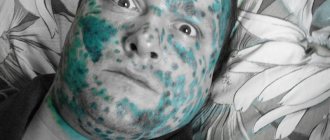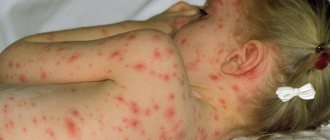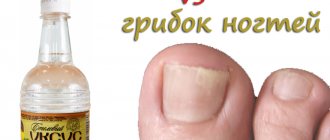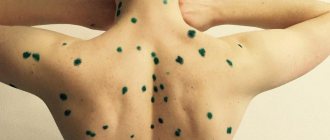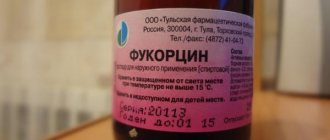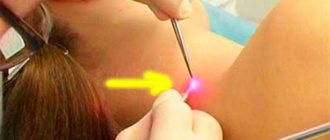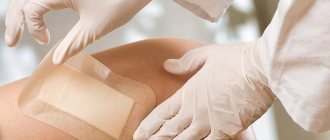Chickenpox is an acute infectious disease, which is most often transmitted through airborne droplets. Preschool children are most susceptible to this disease, however, cases of chickenpox in adolescents and adults are also becoming common these days.
Since the incubation period of chickenpox is quite long, ranging from 10-21 days, it can be difficult to determine when the infection occurred. During this period, the child looks absolutely healthy, and the virus penetrates the body, multiplies and accumulates. And only after the end of the incubation period do the first signs of chickenpox appear in a child or adult.
Why scars may remain after chickenpox
The most striking symptom of chickenpox is vesicles filled with serous fluid, 2-5 mm in size. They appear on different parts of the body in the first 5 days after infection.
The appearance of the rash is preceded by a short period of weakness and malaise accompanied by intense fever. After the formation of bubbles, general health improves. The blisters burst, the places where they rupture become covered with a crust, under which the regeneration of healthy skin tissue (or mucous membrane) takes place. If the process is not disturbed, after a couple of weeks the crusts will fall off on their own, leaving no traces.
Chickenpox scars on the face or other parts of the body remain due to a number of reasons. The most common of them:
- tearing off crusts from ulcers. The characteristic itching of chickenpox varies in intensity. It may be difficult for a patient, especially a child, to resist scratching the affected areas;
- failure to comply with personal hygiene rules;
- penetration of infection into the wound. This factor is directly related to the first reason. The virus affects only the superficial layer of the epidermis, but if the ulcer is constantly picked, the infectious inflammation will spread to the deeper layers of the skin. The structure of the tissues will change, and pits in the damaged areas will remain for life;
- weakened immunity makes the virus more active, restoration processes in tissues proceed slowly. This leads to scarring;
- rubbing problem areas with clothes made of rough or synthetic fabrics;
- incorrect choice of external medications or folk remedies. Under the influence of their active substances, the crusts fall off early, when healthy tissue has not yet fully formed. The regeneration process of the epithelium is disrupted, and a keloid forms.
People who have chickenpox as adults are at much greater risk of scarring than children.
Where do scars come from?
- In people with reduced immunity, during chickenpox, the rash appears as large and, most importantly, deep blisters that take a long time to heal and eventually leave scars;
- When chickenpox becomes complicated, a bacterial infection begins to develop, pus accumulates under the skin, which is difficult to treat, and in 90% of cases, leaves behind “unpleasant pits”;
- Irritation of the chicken rash, scratching, causes infection, which ultimately leads to healing of the wounds;
- A big mistake is to “pick/pick out” the sores before the crust from the blisters falls off on its own. This disrupts the natural healing of wounds, resulting in scars;
Is it possible to avoid signs of chickenpox?
In order not to think about how to remove chickenpox scars, therapy should be started from the first days of the disease and stopped only after complete recovery.
In severe cases of chickenpox, the patient is prescribed antiviral drugs (for example, Acyclovir).
Antihistamines help to cope with itching, the main cause of scar formation: Claritin, Clarisens, Lomilan and others.
It is extremely important to keep your child’s clothes and bedding clean. They need to be changed daily, choosing soft natural fabrics. The baby's nails should be cut short, and it is advisable for the baby to wear mittens.
Bubbles must be treated every day with special products to protect against bacteria. One of the most affordable and effective antiseptics is Brilliant Green Solution.
Zelenka has the following effects:
- destroys harmful microorganisms;
- dries wounds;
- allows you to control the course of the disease (thanks to its bright color);
- prevents infection.
You can prevent scarring after chickenpox with a well-chosen external remedy. To treat ulcers use:
- Fenistil gel stops inflammation, activates recovery processes, counteracts infection and the formation of pustules;
- PoxClean increases local immunity, cools the skin, prevents relapses, and accelerates regeneration. Non-toxic, suitable for children;
- Viferon contains an interferon inducer, acts as an immunomodulator, relieves swelling;
- Gistan in the form of a cream is used to eliminate allergic reactions and relieve the inflammatory process.
All external medications prescribed for chickenpox, among other effects on the body, have cooling properties, which relieve itching.
How to prevent scars from forming
The simplest, most effective and cheapest way is brilliant green.
Brilliant green solution has the following properties:
- kills germs at the site of the blisters.
- is a preventive measure for the development of bacteria and infections in areas where rashes spread.
- Using brilliant green, old rashes are “marked”, so you can track whether the disease has subsided or not.
- brilliant green has drying properties, this allows you to keep a protective crust on the sore, just enough until the formed hole is “overgrown” with new epithelium.
Advice! Chicken rash is very itchy. While an adult can tolerate it, small children cannot control their desires and begin to scratch their skin. In order to at least somehow protect the child, nails should be cut short during illness, or wear protective gloves (mittens/gloves).
In addition, until the sores completely go away, you need to remember the following rules:
- You cannot use cosmetic antibacterial products without medical indications;
- You should not use creams, masks, foundations with a high content of fatty substances;
- Wound healing substances should not be used without a doctor’s prescription;
- massage, rub, stroke the skin near the chicken rash.
How to get rid of the consequences in a child
To remove scars from a child, you need to start treatment before the keloid tissue is completely formed.
In advanced cases, silicone gels are recommended:
- Medgel softens the dermis, the pits become less noticeable;
- Dermatix has softening and moisturizing properties, minimizes pigmentation;
- Kelo-cat activates the processes of keloid resorption;
- Zeraderm ultra is used when the scar is more than a month old.
The course of treatment is selected individually, on average it lasts about 60 days.
Mederma gel with allantoin is used against inflammation in the affected area. It is rubbed three times a day into the formed pits. This should be done with circular massaging movements. The duration of treatment is from 3 months to six months.
In the initial stages of scarring, ointments are effective:
- Contractubex;
- Dermatix;
- Bepanthenol;
- Dexpanthenol.
The Rescuer gel for children based on beeswax has proven itself well. You can start using it as soon as the crusts fall off.
Treatment
Most cases of chickenpox in childhood are treated at home with symptomatic medications. Only severe forms of chickenpox need to be treated in hospital using antiviral medications.
The child is recommended to rest in bed, drink plenty of fluids, and eat foods that are gentle on the digestive tract. To prevent infection and relieve itching, the rash is smeared with brilliant green, fucorcin, PoxClean, Tsindol, soda solution and other local remedies. If the itching is very severe, antihistamines and sedatives are selected together with the pediatrician.
An infectious disease such as chickenpox is difficult to confuse with other diseases. The first signs of chickenpox in a child are not much different from the disease in an adult. Although most people get the disease during childhood, some do not become infected until adulthood. There is no reason to be happy about this, because the older a person gets, the more complex the disease becomes. You will learn what chicken pox looks like and what are the first signs to recognize it by reading the information, photos and videos.
How to remove scars in adults
In an adult, chickenpox is much more severe than in a child. Severe intoxication and very high temperatures provoke suppuration of ulcers. In addition, the skin in adults renews itself much more slowly, so scars remain much more often and deeper. According to statistics, childhood chickenpox leaves scar marks in approximately 30% of cases; among patients over 20 years of age, this figure increases to 50%.
For old pits, external remedies are ineffective; the help of a surgeon is often required. There are two ways to get rid of scars after chickenpox. The first is called subcision. During the manipulation, the doctor inserts a needle under the skin, which cuts off the connective fibers. The surface of the scar rises, the resulting voids underneath are filled with collagen. The disadvantage of the operation is the likelihood of the formation of a hypertrophic scar.
To eliminate large formations, the most radical method is used - the surgeon cuts out the keloid and stitches the edges of the wound. A thin strip remains at the intervention site. If the pockmarks are small, this method will not work.
Medications
There are a lot of medications for chickenpox scars, they differ in composition, effect on the body, and price. The choice of product must be approached responsibly, guided by the following criteria:
- the gel should be suitable for the “age” of the scar;
- contain substances that have anti-inflammatory and regeneration-stimulating properties;
- the base must be natural.
For the treatment of adults we recommend:
- Zinc ointment;
- Kelofibrase;
- Sledotsid;
- Keratan;
- Bepanten;
- Medgel;
- Fermenkol.
You can use drugs only in consultation with a dermatologist. They have a number of contraindications and do not always help. When there are many holes and they are deep, you should seek help from a beauty salon.
Who may experience complications?
Chickenpox most often affects children in the age group from 2 to 12 years. For them, it occurs in a mild form, without high temperatures and profuse rashes. During the illness, the child is placed under quarantine and does not attend educational institutions and other public places.
However, if a child under the age of one year is infected with chickenpox, it can be accompanied by quite serious complications. Newborns should be placed under specialist supervision for treatment.
Children over 15 years of age during the period of hormonal changes, as well as adults who did not have chickenpox in childhood, are especially susceptible to chickenpox.
Chickenpox is extremely dangerous for pregnant women, because infection can spread to the developing fetus.
In each of the listed risk categories, there is an increase in body temperature to 40°C and the formation of a large number of chickenpox blisters.
Some complications can lead to death, so chickenpox should be treated only under the supervision of an experienced doctor with an individual course of treatment prescribed.
Cosmetic procedures
If long-term home treatment does not bring positive results, you cannot postpone a visit to the clinic. The older the scars, the more time and effort it will take to get rid of them. Professional salons have a sufficient range of effective methods for reducing defects.
Such procedures are contraindicated for children, but for adults, after examination, the doctor will definitely suggest a suitable manipulation. Let's take a closer look at the most popular methods.
Wraps
The wraps are carried out as follows: the skin in the problem area is cleaned, the selected medicinal substance is applied, wrapped with film, and covered with a thermal blanket on top (the face is covered with a cosmetic mask).
Thermal exposure allows the active components to quickly penetrate deep into the skin and soften the keloid tissue. A mixture of olive and lavender oils is often used as healing agents.
Peelings
Peeling is aimed at accelerating skin renewal by forcibly removing the top layer of the epidermis. The procedures differ in depth of penetration, active ingredients, and level of trauma.
The following types of manipulations are carried out for traces of chickenpox:
- chemicals based on organic acids stimulate regeneration by causing light burns;
- laser beams act on the deep layers of the dermis.
These types of peels are quite aggressive. The rehabilitation period takes from a week to a month, depending on the depth of the impact. At this time, the skin needs careful care, protection from sunlight and minor damage.
Mechanical home grinding with abrasive particles of coral, soda, and fruit seeds does not remove traces of chickenpox, but makes them less noticeable, smoothing the skin.
Preventing the negative consequences of chickenpox
The most basic measure to combat complications of chickenpox in a child is to follow the rules of hygiene in order to timely cleanse the skin in the affected areas and prevent further infection. These rules include:
- clean hands;
- short-cropped nails, the youngest should wear gloves;
- frequent bathing (showering) without a washcloth and without wiping with a towel, using only light blotting without damaging the bubbles;
- after bathing, smearing new rashes with brilliant green;
- always clean bed linen and clothes;
- maintaining an optimal (cool) room temperature to relieve itching;
- the use of antihistamines to relieve persistent itching;
- drink plenty of fluids to quickly relieve intoxication and replenish the water-salt balance;
- complete nutrition without foods that cause allergies and are difficult to digest.
Adults need to carefully monitor the child’s condition and call a doctor at the slightest suspicious symptoms in order to prevent complications after chickenpox.
Prevention of scarring
To ensure that chicken pox does not leave scars, it is important to provide the patient with proper care.
Following simple rules will help prevent negative consequences:
- do not scratch the rash;
- take vitamins to strengthen the immune system;
- monitor the cleanliness of clothes and bed linen;
- comply with all medical prescriptions;
- Regularly treat blisters with antiseptics.
As soon as the temperature subsides, you should take a warm shower every day, without gels. You can’t use a whisk either, it can peel off the crusts.
To prevent chickenpox from leaving ugly marks, you should consult a doctor at the first signs of infection. A dermatologist will develop a therapeutic complex that is effective in a particular case. Vaccination will help protect against the disease itself. The chickenpox vaccine is a reliable and safe way to prevent the disease.
-
A child usually survives chickenpox without complications. The main inconvenience is the rash, which itches a lot. Normally, the body recovers completely, but often after chickenpox, scars appear on the skin at the site of the rash. How to deal with scars, is it possible to completely remove them? What treatment methods are there? How can a cosmetologist help?
Total duration of illness
How long do you have chickenpox, and what does it depend on?
Based on the incubation period, it takes on average up to 3 weeks until it occurs. This time is not the active phase of the disease, but the viral agent is released into the environment. The active phase of the disease is accompanied by abundant secretions of viral microflora and visual signs of the disease: rash, itching, fever, weakness, refusal to eat, fatigue, and poor health. Considering that the active stage of chickenpox lasts a week, and adding the time for complete healing of all wounds on the body, we can say with confidence that the period of chickenpox in humans lasts from 7 to 14 days.
It is difficult to make predictions regarding a specific period, since the duration of illness fluctuates due to the individual reaction of the body.
Why do traces remain after chickenpox?
Chickenpox blisters damage the upper layers of the epidermis, resulting in unsightly scars or pits. The deeper the damage, the larger the scars. Chickenpox spots and dimples are easy to see in the photo.
Pits occur when papules have injured the deep layers of the skin. This can be facilitated by the simultaneous occurrence of chickenpox and the herpes virus, which is easily activated in a weakened body.
Chickenpox rash does not appear overnight; it goes through several stages of formation, so it manages to seriously affect the skin:
At every stage it is important to provide the baby with the right help. There is no need to smear the red dots with brilliant green. They must form, and the blisters must be treated. When the blisters burst, wounds appear in their place.
Improper patient care is the main cause of scarring of wounds in children, but not the only one. There are a number of factors that provoke the appearance of external defects. Other reasons:
What chickenpox looks like in infants photo – 40 pcs.
What does it look like ?
The main symptoms of chickenpox in infants are a red, itchy rash that is somewhat reminiscent of the effects of insect bites. The rash often starts on the face, chest and back, but can then spread throughout the body, even ending up in the mouth. The rash gives way to fluid-filled blisters that eventually rupture into tiny pockmarks. Neither blisters nor already open pockmark ulcers should be scratched (even in response to unbearable itching), otherwise the disease risks protracting and causing serious complications. The number of pockmarks can vary greatly - from 10-20 throughout the body, to several thousand. But usually a child develops about 200-300 “sores” during the entire period of illness. Still, no matter how strange it may sound, it is best to get chickenpox in childhood, since it is easier to tolerate in childhood. Of course, it’s a pity for the baby in the photo, but I think that soon he will be healthy and there will be no trace of chickenpox left.
I always thought that infants have fewer rashes with chickenpox. But it turns out that this is not so. I can imagine how hard it is for such a baby, because the pimples itch very much.
source
How to get rid of chickenpox scars and scars?
Parents are upset by skin defects after chickenpox (we recommend reading: how and how should chickenpox be treated in children at home?). Nobody wants marks to remain for life, especially on the face. Sometimes this becomes the reason for complexes or ridicule from peers.
There are three main methods of dealing with scars:
- pharmacological agents (ointments, creams or gels);
- ethnoscience;
- cosmetology (use of professional products or special devices).
Pharmacy ointments and gels
Pharmacology has created many drugs against scars and scars that are suitable for children. Their action is mainly aimed at artificially stimulating the regeneration of skin cells.
Products based on panthenolic acid derivatives (dexpanthenol) are in demand and available. The substance belongs to the B vitamins. Medicines have different names and are produced in different countries. However, their action is almost the same. The cost varies from 150 to 350 rubles depending on the manufacturer.
Preparations based on panthenolic acid:
- Dexpanthenol (spray, ointment);
- Panthenol (5 percent cream, spray);
- D-panthenol (cream 5 percent);
- Panthenol ratiopharm (cream).
There are many other drugs that are widely used to combat the problem. They differ in composition and principle of action, but when used correctly they give good results.
Folk remedies
The most popular folk remedies:
- Natural cocoa butter. Moisten the tip of your finger in the oil and massage onto the skin. Rub in for 5-10 minutes.
- Vitamin C. Buy any ointment containing the substance at the pharmacy. Rub in with massaging movements for several minutes. To speed up the results, you can simultaneously take vitamin C orally.
- Vitamin E and aloe juice. Mix vitamin E (cut the capsule and squeeze out the required liquid) with aloe juice. Apply the product morning and evening.
- Lemon. Regularly treat chickenpox scars with a cotton swab soaked in lemon juice. Apply generously, do not rub in, let dry.
- Honey. Apply honey to the affected areas (if you are not allergic) and leave for 15 minutes. Then rinse with warm water. To enhance the effect, you can add vitamin E, sandalwood or tea tree oil to honey.
How can a cosmetologist help?
To correct old scars, you will need professional help from a cosmetologist. The specialist will select the necessary procedure that will eliminate the problem.
Types of cosmetic procedures:
- peeling with organic acids leads to slight inflammation, which causes epidermal cells to renew;
- hardware peeling with microcrystalline particles removes the top rough layer of scar tissue and starts the recovery process;
- wrap;
- laser resurfacing;
- hyaluronic acid injections;
- physiotherapeutic procedures (electrophoresis, iontophoresis, etc.).
Can a newborn baby get chickenpox?
During the first 6 months, the baby is protected from various diseases by the mother's antibodies, which are passed on to him at birth and through breast milk. If the mother continues to feed the baby without switching to formula, then the beneficial substances of the milk will continue to protect it from the effects of negative factors from the outside. However, even those children who are breastfed can catch chickenpox. Why might this happen?
Most people become acquainted with chickenpox in childhood, but there are those who do not get it at all or become infected at an older age. The peculiarity of this disease is that a person who has suffered from the virus develops lifelong immunity to it. Mother's antibodies are able to provide protection to the child only for the first few months of life.
If the mother is not immune to chickenpox, then her milk cannot protect the newborn from the disease. In some cases, a woman in labor becomes infected immediately before birth. The body does not have time to produce protective cells, and the infection is transmitted to the newborn. The disease takes on a congenital nature.
Children who are 1 month old or 7-12 months old can become infected with the virus, despite the fact that their parents are immune to the infection. This can happen if the baby is bottle-fed or the mother stops breastfeeding after six months. There is a high probability of infection of infants if their body is weakened as a result of previous diseases.

